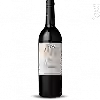
Winery Baron Philippe de RothschildValle Central Merlot
In the mouth this red wine is a powerful.
This wine generally goes well with beef, veal or lamb.
Taste structure of the Valle Central Merlot from the Winery Baron Philippe de Rothschild
Light | Bold | |
Smooth | Tannic | |
Dry | Sweet | |
Soft | Acidic |
In the mouth the Valle Central Merlot of Winery Baron Philippe de Rothschild in the region of Central Valley is a powerful.
Food and wine pairings with Valle Central Merlot
Pairings that work perfectly with Valle Central Merlot
Original food and wine pairings with Valle Central Merlot
The Valle Central Merlot of Winery Baron Philippe de Rothschild matches generally quite well with dishes of beef, lamb or veal such as recipes of beef tongue with vegetables, dad's lamb mouse or provencal veal tendrons.
Details and technical informations about Winery Baron Philippe de Rothschild's Valle Central Merlot.
Discover the grape variety: Merlot
Merlot noir is a grape variety that originated in France (Bordeaux). It produces a variety of grape specially used for wine making. It is rare to find this grape to eat on our tables. This variety of grape is characterized by small to medium sized bunches, and medium sized grapes. Merlot noir can be found in many vineyards: South West, Languedoc & Roussillon, Cognac, Bordeaux, Loire Valley, Armagnac, Burgundy, Jura, Champagne, Rhone Valley, Beaujolais, Provence & Corsica, Savoie & Bugey.
Last vintages of this wine
The best vintages of Valle Central Merlot from Winery Baron Philippe de Rothschild are 2016, 2015, 2014, 2012 and 2011.
Informations about the Winery Baron Philippe de Rothschild
The Winery Baron Philippe de Rothschild is one of of the world's great estates. It offers 180 wines for sale in the of Central Valley to come and discover on site or to buy online.
The wine region of Central Valley
The Central Valley (El Valle Central) of Chile is one of the most important wine-producing areas in South America in terms of Volume. It is also one of the largest wine regions, stretching from the Maipo Valley (just south of Santiago) to the southern end of the Maule Valley. This is a distance of almost 250 miles (400km) and covers a number of Climate types. The Central Valley wine region is easily (and often) confused with the geological Central Valley, which runs north–south for more than 620 miles (1000km) between the Pacific Coastal Ranges and the lower Andes.
News related to this wine
The Mâcon plus appellation investigated through its geology and geography
The Bourgogne Wine Board (BIVB) invites you to enjoy this video in which Jean-Pierre Renard, Expert Instructor at the Ecole des Vins de Bourgogne, explains the topographical and geological characteristics of the appellation Mâcon plus geographical denomination . The tectonics and the very different nature of the rocks that make up the subsoil of this region explain the great variety of soils found in this part fo Bourgogne. It also explains why each wine offers a different personnality. This vid ...
Chablis takes pride in its subsoil by Ivy NG
On December 10, 2020, four Hong Kong personalities discussed Chablis wines on a live webinar: Yang LU, Master Sommelier and Official Bourgogne Wines Ambassador, Debra MEIBURG, Master of Wine, Ivy NG, Official Bourgogne Wines Ambassador and Rebecca LEUNG, wine expert. In this two-and-a-half-minute clip, Yvy NG describes the unique subsoil that Chablis is so proud of. ...
The Rully appellation investigated through its geology and geography
The Bourgogne Wine Board (BIVB) invites you to enjoy this video in which Jean-Pierre Renard, Expert Instructor at the Ecole des Vins de Bourgogne, explains the topographical and geological characteristics of the Rully appellation. Here the vineyard is planted on different hills which have very different gelogicial characteristics. It partly explains the great diversity in the expression of the Rully wines. This video is taken from the “Rendez-vous avec les vins de Bourgogne” program (February 20 ...
The word of the wine: Light (taste of)
Taste close to oxidation, characteristic of champagnes altered by prolonged exposure to light.














